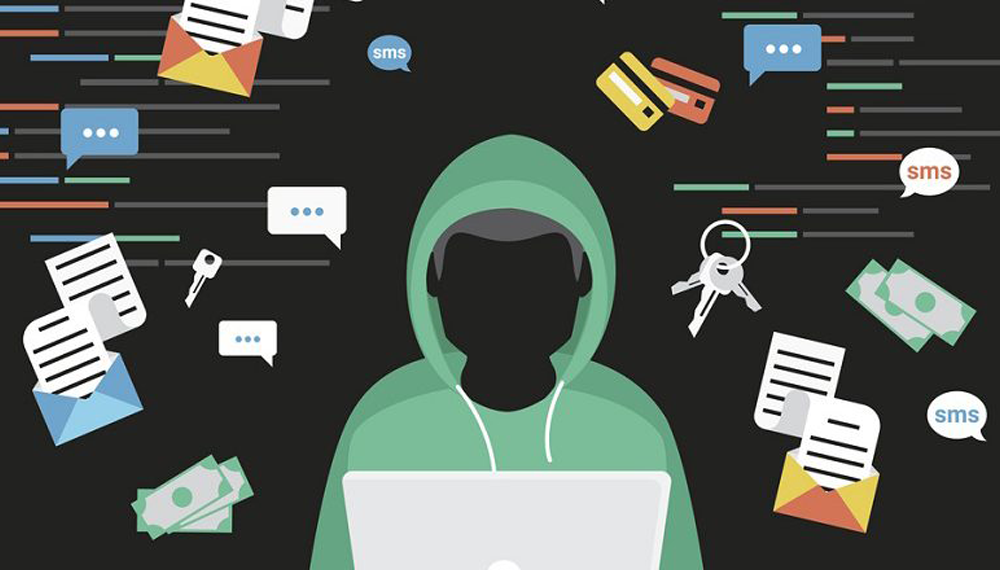Cyber criminals are becoming advanced in their approaches and no business is completely safe from being targeted. The most prevalent of these attacks, which has seen a major rise in popularity as of late are spoofing attacks. Protect your SMB from spoofing attacks today.
What is a spoofing attack?
A spoofing attack is when a cybercriminal uses another parties information or data and impersonates them so that their identity remains hidden. There are many different types of spoofing attacks and are all carried out with intent of attacking a business’s network, to steal confidential information and to add malware onto their systems.
It is perceived that cybercriminals tend to target larger enterprises when it comes to spoofing attacks, driven by financial gain and reward. But that isn’t necessarily true, and your business is still at risk!
Statistics show that 58% of cyber-attacks target smaller organisations, so it’s vital that you have the correct security and staff training in place, to prevent against spoofing attacks.
Check out the top 5 spoofing attacks that SMB’s should be particularly wary of…

TOP 5 smb SPOOFING ATTACKS
EMAIL SPOOFING
This technique is a common spoofing technique used to try and gain access or control of a business’ data or network. Criminals trick staff members into thinking an email has been sent by a senior member of staff, an authorised source or even another employee.
The construction of the email appears familiar to the target and often contains legitimate content that an employee may not question. It could include information on the organisation, brand colours and even logos which makes identifying these types of emails particularly difficult, especially if email systems don’t have up to date IP address authentication.
The criminals want the recipient to open the spoof email and engage with the content in the message, usually a link or an attachment, so the hacker can either activate malware onto the system or retrieve confidential information, putting your business at risk.

TOP TIP
To prevent your business from being targeted it’s important to make sure you have the latest security software installed on your devices, to avoid damage or loss of data. Remind your staff about the severity of cyber-attacks and train them to identify, question and report potentially suspicious emails.
Caller ID Spoofing
Caller identification is a system which allows you to distinguish who is contacting you before you answer the call. Cybercriminals manipulate this process by altering their caller ID so that people don’t recognise that an unknown, potentially suspicious, number is contacting them. This allows them to remain anonymous whilst increasing their answer success rate. This is known as Caller ID Spoofing.
Cybercriminals usually alter the ID to make it appear as someone you recognise, so that you are more likely to answer the call. For example, a hacker could change the ID to appear as your bank and because the call seems to be from a trusted number, it adds more credibility to the criminal’s attack.
If you answer the incoming call, hackers will usually apply scam scripts so they can obtain personal or sensitive information that could give them access to bank details and aid in fraudulent activity.

TOP TIP
It’s difficult to completely eradicate Caller ID spoofing attacks, but there are things you can do to manage the risk. Check with your phone provider to see if they offer a service that filters scam calls or, when an individual rings, be sure to make a note of their name and verify this with the supposed organisation.
WEBSITE SPOOFING
Website spoofing is when a cybercriminal mimics a legitimate organisations website, so people are fooled into visiting it and interacting with what they believe to be a legitimate website. They construct a carbon copy of a pre-existing website and copy the same branding, so that employees think they’re communicating and doing business with a trusted partner, when in reality it’s a hidden cybercriminal.
They con people into making purchases or entering personal details into forms, which could expose them and the organisation to malware attacks. This could lead to a loss of confidential data or potentially even a full system shut down. Their main objective is to gain a legitimate advantage, by deceiving businesses or their personnel and generate cyber-attacks.

TOP TIP
Be mindful that email spoofing and website spoofing are often used together as this adds credibility to attacks. A perpetrator usually attaches malicious content, like a link to a designated spoof web address, to a spoof email in the hope that you fall into the trap and help them get what they want – your data.
Text Message Spoofing
Like caller ID spoofing, hackers use a similar process for SMS spoofing. They change the existing phone number to alphanumeric data, so their number can’t be traced, and so their identity remains hidden.
As businesses increase their use of SMS to communicate with clients, send reminders, inform customers on offers and to establish better brand loyalty, SMS spoofing has become a serious problem.
SMS has a much higher open rate than emails and users are used to receiving this type of communication from trusted brands. This makes identifying a spoofing attack more challenging.
A perpetrator will send a message, so it appears as though it’s coming from a trusted number. They usually verify who they are at the bottom of the text which adds more credibility.
Hackers use this method to extract personal information from you, by sending links to malware downloads or phishing sites, which could leave you vulnerable to bank fraud or data loss.

TOP TIP
Avoid clicking on links from contacts that look suspicious. If the source advises you to take immediate action on something, call the organisation personally by getting the number from their website and clarify with an employee before engaging. Don’t send personal details to an organisation through SMS, as companies never normally ask you to do this.
MAC Spoofing
A MAC address is unique to every device and if your Wi-Fi network isn’t robust and secure, hackers can modify the settings on one device to look like the MAC address of another device on your network bypassing security.
MAC spoofing is used to gain access to a business’ network. It allows the cybercriminal to masquerade under the guise of another MAC address to appear as though they are part of the organisation’s network, this allows them to steal valuable and/or confidential information.
Once they have access, they can also plant malware onto the systems to disrupt business operations and can result in device or processing malfunctions.

TOP TIP
To prevent your business being affected by MAC spoofing, it’s worth while to use a network monitor. This alerts the security team if any MAC addresses appear with the same two IP addresses, which helps your business to detect any suspicious activity early on.
PROTECT YOUR SMB AGAINST SPOOFING ATTACKS
Preventing a spoofing attack is dependent on the type of spoofing you receive, as every variation has different indicators to look out for. Some spoofing attacks are harder to distinguish than others, so it’s important to be aware of the notifications you receive, as unfortunately there isn’t a way to stop hackers, but there are measures you can apply to your business to help protect you from becoming a cybercriminals next victim.
To eliminate the risk of a spoofing attack, it’s imperative to make sure you’ve got a personalised security policy in place, which will make it harder for perpetrators to access your network and cause significant damage.
Another key element in keeping cybercriminals at bay, is to educate your staff on spoofing attacks so they can look out for any red flags and obvious signs of a potential attack if one arises. It’s important for employees to have consistent, up to date training, as cybercriminals are continually learning new ways to try and trick businesses, so its vital to remain vigilant to new strategies.
Utilise Cybsafe
Cybsafe is an interactive training portal which offers extensive training for business staff, to become more equipped and informed on cyber-attacks. Its an effective way of educating employees on malicious activity, as it guides users on the different variations of cyber-attacks, as well as replicating a dummy attack so employees can test their knowledge, to prepare for potential threats in the workplace.
For more information on Cybsafe security, click here





Recent Comments